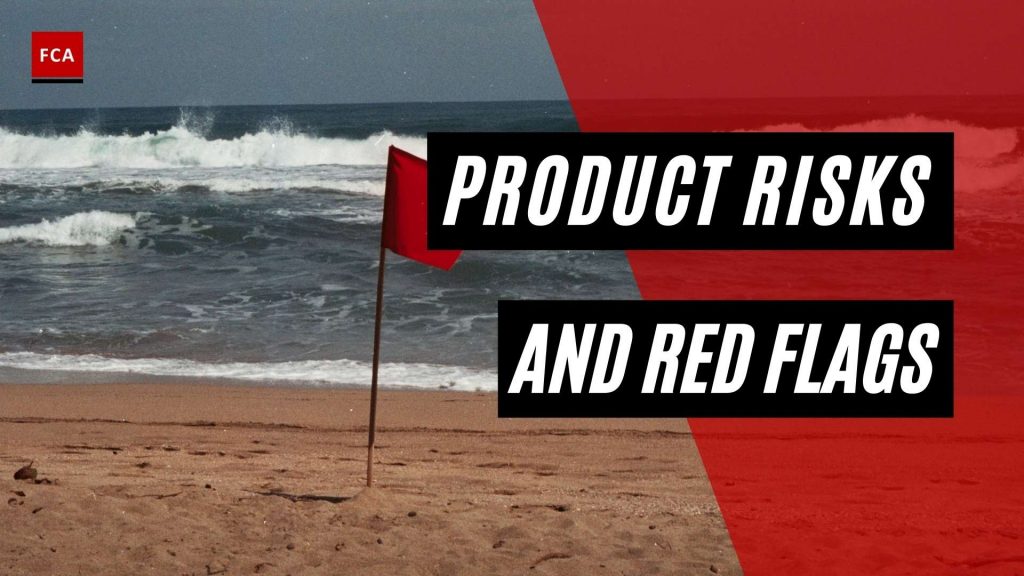Product risk is the risk that products or services offered to the customers may be misused by the customers for money laundering or terrorist financing activities. This article elaborates on ‘Product Risk and Red Flags’.
As a best practice, the firm conducts research, market studies, and ML/TF risk assessments before creating, producing, and delivering goods or services to consumers. A product-related ML/TF risk assessment is required to detect and comprehend the many methods that consumers may use to carry out their evil intents or engage in money laundering and terrorist financing.
Banks’ interdependency on service providers
Organizations, such as banks, are obligated to comply with applicable regulatory standards for the products they supply. The difficulty that banks confront is their interdependency on service providers, without whose assistance, products such as ATM network operations, digital banking solutions, and so on, may not be available to clients. These variables contribute to product risk since needed controls may not be designed by the business itself, necessitating dependence on service provider controls.
The type and qualities of the products and services given to clients have a substantial influence on the organization’s risk profile in terms of money laundering and terrorist funding. The risks associated with a product or service are determined by whether the product or service’s attributes offer the user functionality that might be used to facilitate money laundering and terrorism funding through the organization’s financial channel.
Offering services to high-risk category customers
The ML/TF risks increase further when the products or services are offered to the high-risk category customers, such as Politically Exposed Persons (PEPs), NGOs, Charitable organizations, and Correspondent Banking Accounts. For these high-risk category customers, the organization must mark them as “High-Risk” and need to regularly perform detailed scrutiny and monitoring for the products offered to such customers and the utilization made by such customers of the products or services.
All high-risk category customers are subject to ongoing monitoring to identify any potential or existing suspicious activity or money laundering risks. High-risk category customers are more prone to conduct ML/TF activities. Therefore, when offering the products or services to them, the organization must ask questions in detail about the use and need of the products and services requested by high-risk category customers.
Escalation of ML/TF risks to CCO
AML team must perform regular compliance reviews to identify the purpose of requesting the products and services by the customers and the actual use of such products or services. Instances of ML/TF risks or incidents must be noted and escalated to the Chief Compliance Officer (or CCO) and the Compliance Committee (or CC).
According to the AML regime, the methodology used to assess products and services related to money laundering and terrorism financing risk is based on several different risk attributes that determine whether a product or service is more vulnerable and, as a result, poses a greater risk from a money laundering and terrorism financing perspective.
Controls assessment
Banks must assess the operating effectiveness of the controls related to money laundering risks connected with certain products to ensure that controls are robust. Consequently, banks must include money laundering risk assessments into their product management systems, create product risk heat maps, often re-evaluate to reflect changing business conditions, and modify assessment results as needed. Before suspending a product, financial institutions should conduct a triggering assessment to adjust product risk levels and optimize control measures. Currently, the following are the most critical challenges which are faced by the organizations such as banks while implementing the product risk assessment and management measures:
In some instances, product categorization and financial accounting techniques now in use are inappropriate for anti-money laundering (or AML) evaluation. Examples include the inability to obtain and evaluate various statistics such as product effectiveness and client bases in an unfiltered manner.
The product-related trigger mechanism is difficult to design and implement, due to the complexity of the products, and interdependency on the service providers, such as in the case of credit cards, core application systems, and so on.

Red Flags
Below are the product risks related examples of red flags, which require review and investigations:
- The development, and offering of the product without research and ML/TF risk assessment;
- The refusal to provide the need, or use of the product by the customer;
- Excessive requests for the particular product, without apparent need and purpose;
- A pattern of frequent early loan repayments;
- Transfers are regularly made that are labeled as loans from family members;
- Funds have been transferred to a charity or non-profit organization linked to a terrorist organization.
Final Thoughts
The risk that products or services offered to the customers may be misused by the customers for money laundering or terrorist financing activities is called Product Risk. This article elaborates on ‘Product Risk and Red Flags’ and hot assessments must be done to identity the risks of a product.









